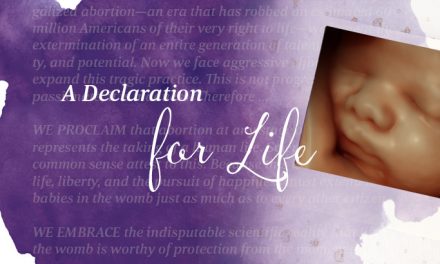Leonardo da Vinci is one of the most celebrated artists in history.
His paintings are all considered masterpieces, but it is his sketches and research into anatomy and science that showed a level of genius that was hundreds of years ahead of his time. For example, his renderings included rudimentary bombs, tanks and even helicopters. He also became an expert in human anatomy, where his renderings of musculature and tendons remain comparable to some of the latest imaging technology
But perhaps no work of Leonardo’s is more profound or beautiful than his drawing of a preborn baby in the womb.
“The drawing rivals Vitruvian Man as an emblem of Leonardo’s combination of art and science. It is good as an anatomical study, but purely divine, almost literally so, as a work of art. Drawn with meticulous curved hatching that are designed to dazzle our eyes as much as inform our minds, it captures the human condition with a spiritual beauty that is at once unnerving and ennobling.” That’s how author Walter Isaacson described Leonardo’s sketch of the world’s first known image of a preborn baby.
Shown curled up with the umbilical cord around one of the ankles, the preborn infant is seemingly in a state of suspended animation. The preborn is likely full-term, waiting in the breech position for the right moment to enter the world. Although some of Leonardo’s descriptions of the baby were imperfect, his findings were in many ways revolutionary.
He correctly figured out that the umbilical cord is what nourished and removed waste from the baby, and that the uterus was made up of one chamber and not two. The preborn baby was also so big that he was curious about how the child could fit into such a small space. The experience seemed to evoke a sense of wonder.
According to Isaacson, da Vinci knew that seeing what was inside the womb wasn’t like any of the other anatomical studies that he performed. Instead, it was something incredibly special, almost spiritual. In fact, da Vinci revisited the sketch a couple of years later and wrote his belief that the mother and child share one soul until birth. “One and the same soul governs these two bodies,” he wrote. “And one and the same soul nourishes both.”
Although Christians may disagree over his conclusion, the world’s most famous artist was onto something. A preborn baby is not merely a clump of cells or an anomalous creature, but is a developing human. It took centuries until the invention of the ultrasound and the MRI machine brought a clearer picture of the active and playful life inside the womb.
The theme for this year’s March for Life is Unique from Day One, and is focused on how “being pro-life is not in opposition to science.” In many ways, being pro-life is a celebration of what science has shown us about how life is formed inside the womb and the uniqueness of every life conceived. Life begins at conception, which is the moment when the DNA sequence and all the hereditary characteristics are determined. Everything from the color of a person’s eyes to the shape of their nose is determined in that instant. Scientists have even determined that the moment conception occurs there is a flash of light.
The beauty in the sketch of that preborn baby is incomparable and stands out as possibly Leonardo’s greatest work of art. He may have imagined a future with counting machines and airplanes, but there is nothing more real and awe-inspiring than the image of that baby.
Walter Isaacson, in his biography of Leonardo da Vinci, wrote of the sketch of the preborn baby, “We can see ourselves embodied in the wonder of creation: innocent, miraculous, mysterious.”






